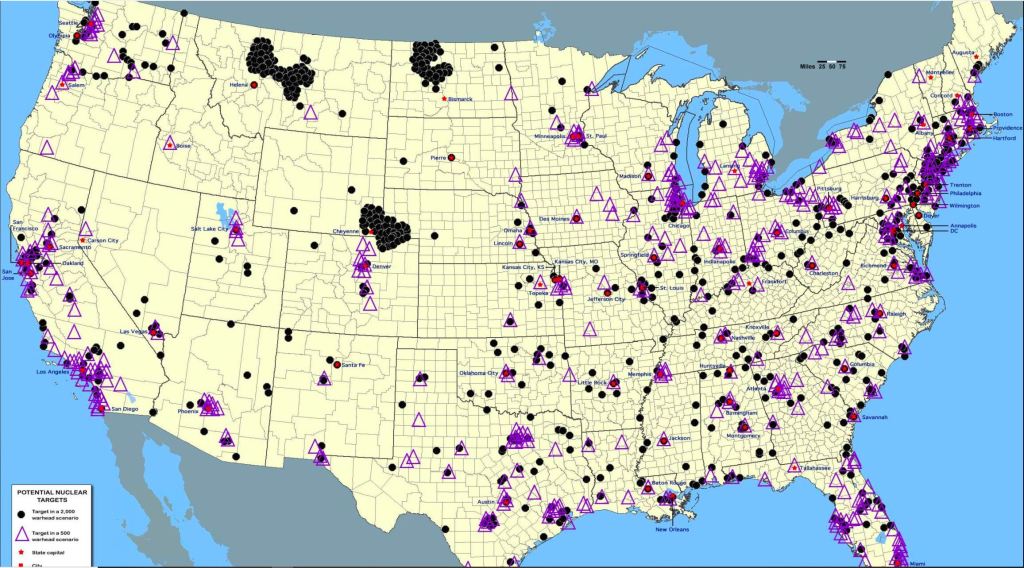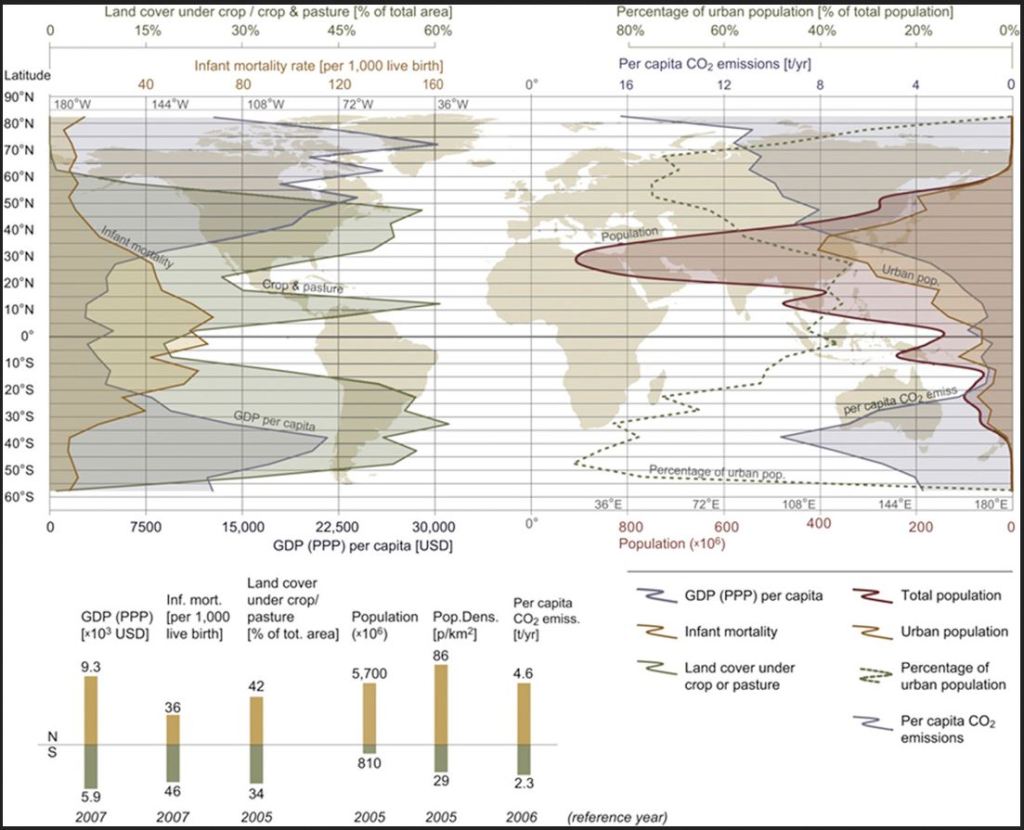That question must come before, “List where the targets of WW III are located.”
When that is defined, it will be possible to state with greater accuracy,
“Where should we go to survive WW III?”
“When should we depart for safer places?”
“What are the problems with going to the safer place?”
“How can we establish friends, and residency in our chosen place?”
Google — “What are the targets in World War III?”
\\ I was a U.S. Air Force pilot in 1960, and the policy, at that time, was to send every last one of over 10,000 available bombs at defined targets. We had numerous B-52, and B-47 strategic bombers loaded with bombs in the air all the time flying near the borders of the Soviet Union. Additionally, there were intercontinental missiles in the central states of the U. S. and submarines hidden in the oceans, near potential enemies. Now, 64 years later, all those systems have been upgraded many times with even more powerful and more accurate weapons. Clearly, what was named the Mutually Assured Destruction policy (MAD) is even MADDER! //
Perplexity — List where the targets of WW III are located.
Based on the search results, here are some of the potential targets that could be hit in the U.S. in a hypothetical World War III scenario: Purple triangles are 500 first targets, and the black circles are the 1000, secondary targets. But, the Russians have 7,000 atomic bombs available on short notice.

Targets in the United States
- Major cities and military bases across the country, with high concentrations on the East Coast and West Coast.
Washington D.C. and other centers of government/military command.
The declassified 1956 U.S. nuclear targets list included over 1,100 locations across Eastern Europe, Russia, China, and North Korea. While the current targets are classified, they likely don’t differ dramatically. Some potential U.S. targets mentioned include:
Targets in Russia and China
The 1956 list specifically called out over 1,100 targets in Russia (then the Soviet Union) and China, including major cities and military installations. Russia still has around 1,900 deployed nuclear warheads that could target the U.S.
Targets in Europe
Many European countries, especially those aligned with NATO like the UK, France, and Germany, could be targeted due to their alliances. During the Cold War, over 1,100 targets were identified in Eastern Europe. While the search results don’t provide an exhaustive list, they indicate that a nuclear world war could see strikes on major population centers, military bases, and centers of government across adversarial nations and their allies. The potential for catastrophic loss of life and radioactive fallout is immense.
\\ This doesn’t list any specific targets, but with 1,100 supposedly on The declassified 1956 U.S. nuclear targets list, we can only assume everything of great value will be targeted.
More than 850 million people live in the Southern Hemisphere, representing around 10–12% of the total global human population of 8,000,000,000. However, there don’t appear to be many if any primary targets there. 145 million live in Java, near the equator

Notice the total crop or pasture curve at 30 degrees South is the highest in the world. That means that there is plenty of food normally available, and in the worst of times people can live on cattle food. Then notice that at 30 degrees South the population of the world is very small and mostly in Buenos Aires, Argentina. There doesn’t seem to be much reason for including these South Americans as being directly involved in WWIII and will be the last to get much if any radioactive fallout, and probably little Nuclear Winter smoke. Almost the entirety of Europe, Russia, and the United States are higher than 30 degrees North.
The original question was, “What are the targets in World War III?” However, that alternate answer was what was being sought. The Southern Hemisphere is more survivable, and with one tenth the population it would have fewer targets. However, none of these countries are strongly allied with the probable participants in WW III. Therefore, it isn’t reasonable for any of the belligerents to target any of these southern countries or their large cities.
- São Paulo, Brazil
- Sydney, Australia
- Melbourne, Australia
- Buenos Aires, Argentina
- Rio de Janeiro, Brazil
- Johannesburg, South Africa
- Lima, Peru
- Santiago, Chile
- Perth, Australia
- Auckland, New Zealand